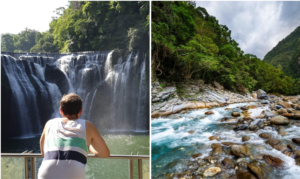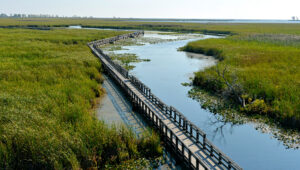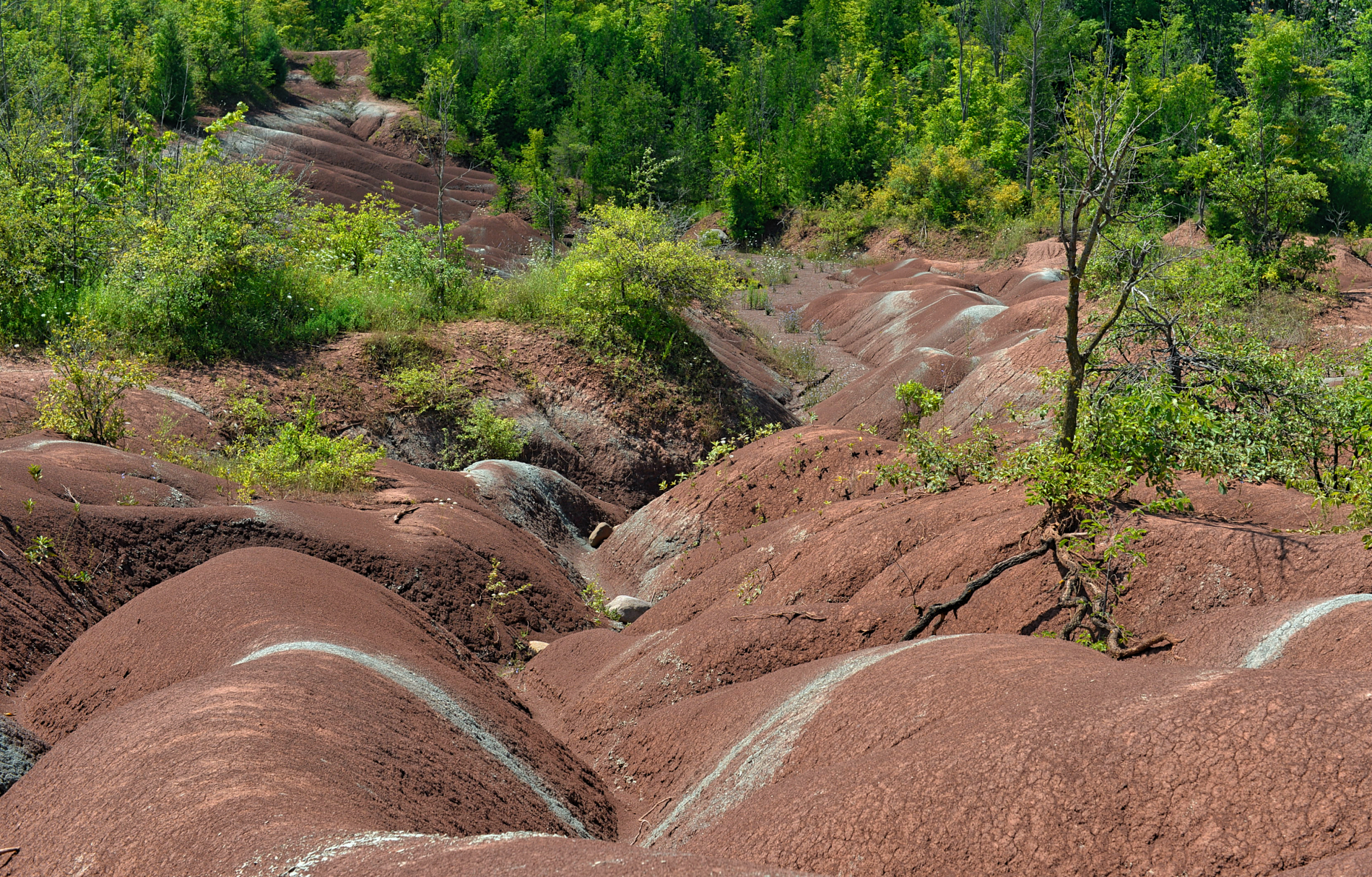
6 Canadian destinations that look like you’re on another planet
People have long entertained fantasies about visiting far-off planets. Fortunately for the majority of us, Earth has some genuinely breathtaking locations that will make you feel as though you’ve just stepped foot on another planet. A plane ticket is all that’s needed to enjoy an extraterrestrial experience.
There are a lot of strange and amazing places in Canada. These are a some of the most bizarre scenery found on Earth.
1. Dare Devil Trail, St-Antony, Newfoundland
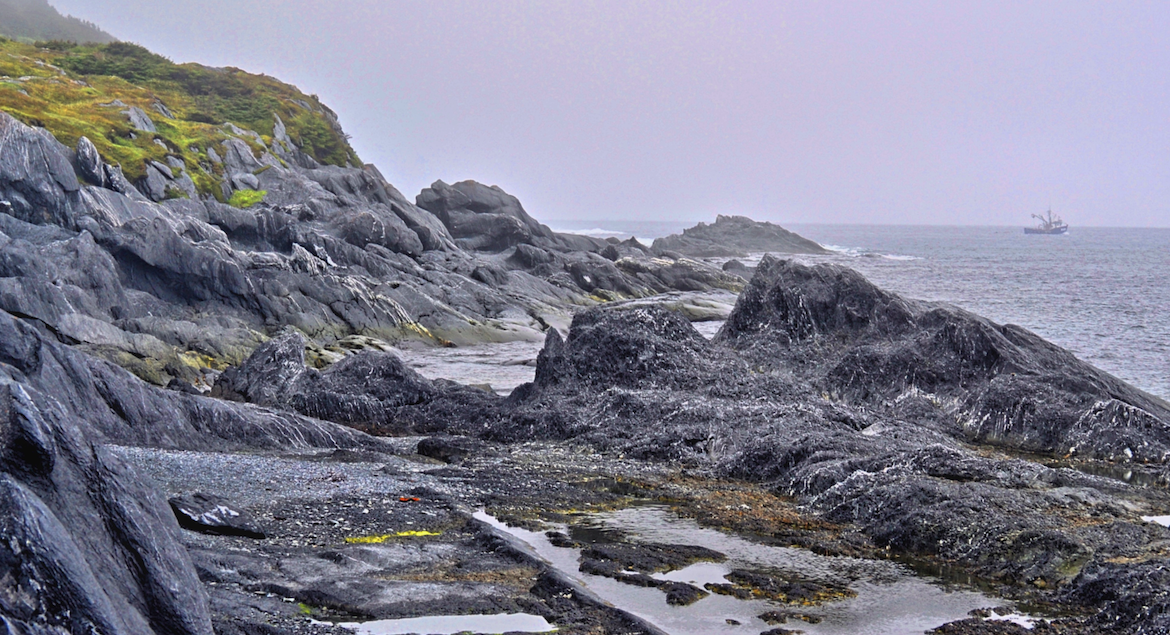
Don’t let the name scare you, this is one is not very dangerous. This well-maintained trail is located at Fishing Point Park and will take the trek over 400 steps on Dare Devil Trail to reach the top of Fishing Point Head where you can see insane views of the ocean. It’s worth the climb! The village, St. Anthony Bight, the shoreline, whales, icebergs, birds, fishing boats, and much more can all be seen from the vantage point at the top.
2. Devil’s Monument, Bruce Trail, Ontario
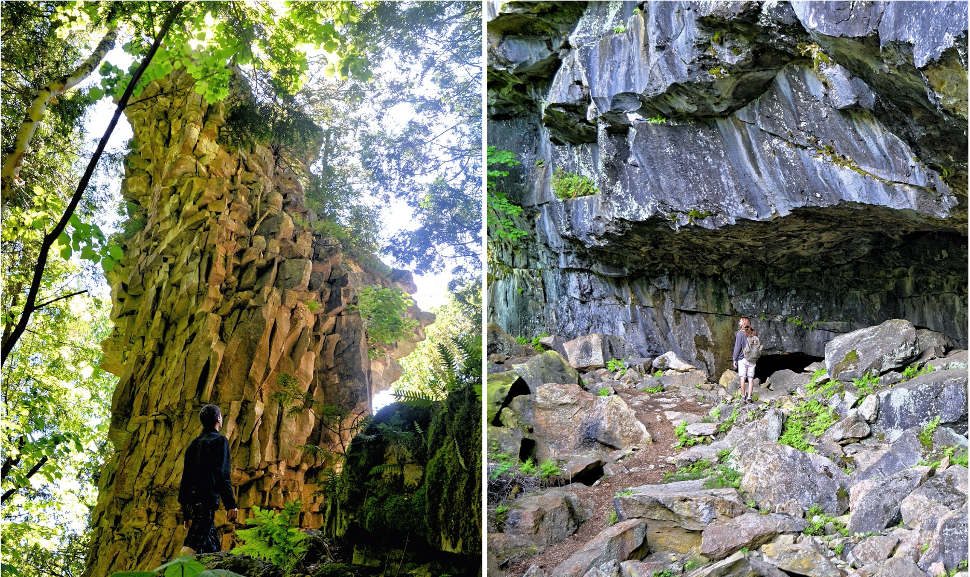
The Devil’s Monument Loop Trail takes you to the most incredible rock formation. Devil’s Monument is the largest of the Bruce Peninsula’s flowerpot formations and one of the many spectacular places along the craggy shoreline known for incredible views. A Flowerpot is a type of sea stack, formed over many years as wind, rain and waves chip away at the cliff.
3. Maligne Canyon, Jasper, Alberta
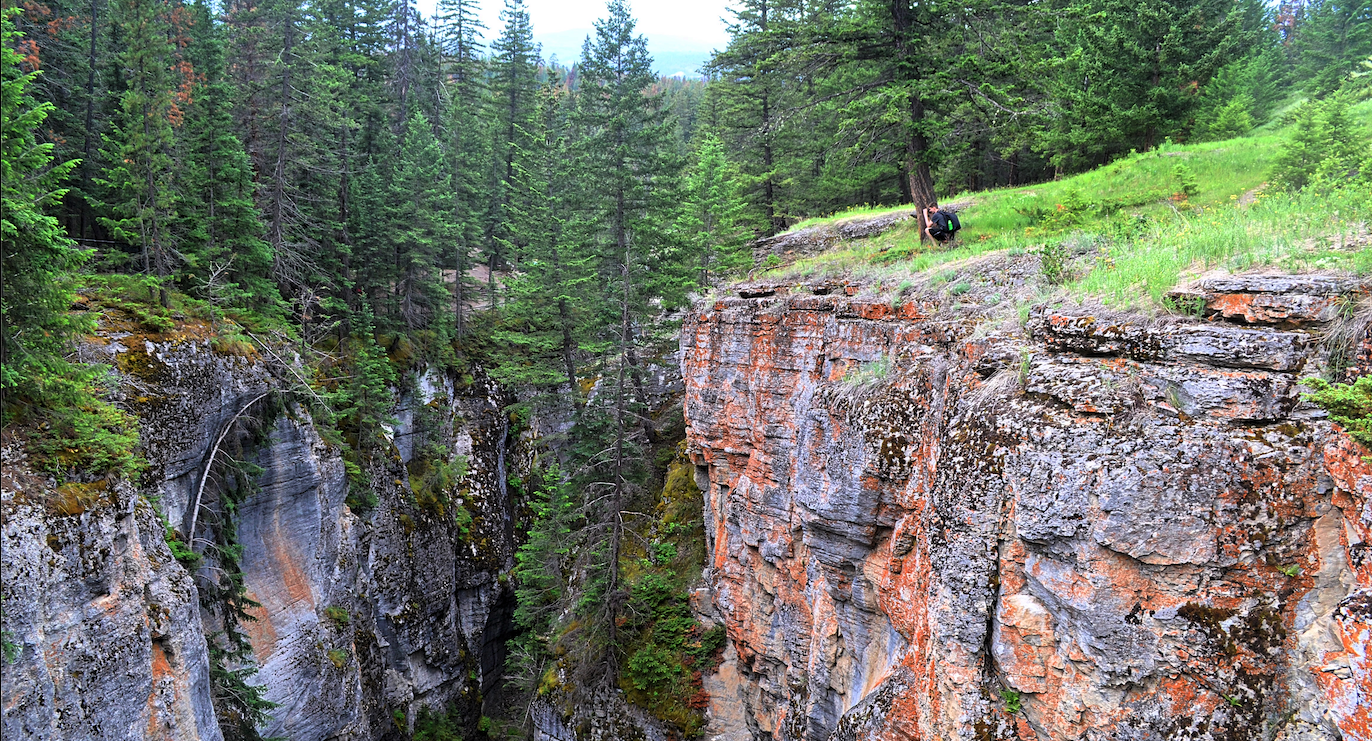
Maligne Canyon is a wonder, summer or winter. Its name means “the wicked”, and has been impressing visitors of Jasper National Park for decades. It was in fact featured by Expedia as one of the best Canadian destinations.
The hike will start you at the very top of the canyon and you will slowly make your way down while exploring waterfalls, springs and caves. The distance is about 3.7 km, which takes about 1 hour to hike each way. The Maligne valley narrows as you reach the bypasses at the fourth bridge, but stairs await you as soon as it becomes steep.
4. The Tablelands Trail, Gros Morne, Newfoundland
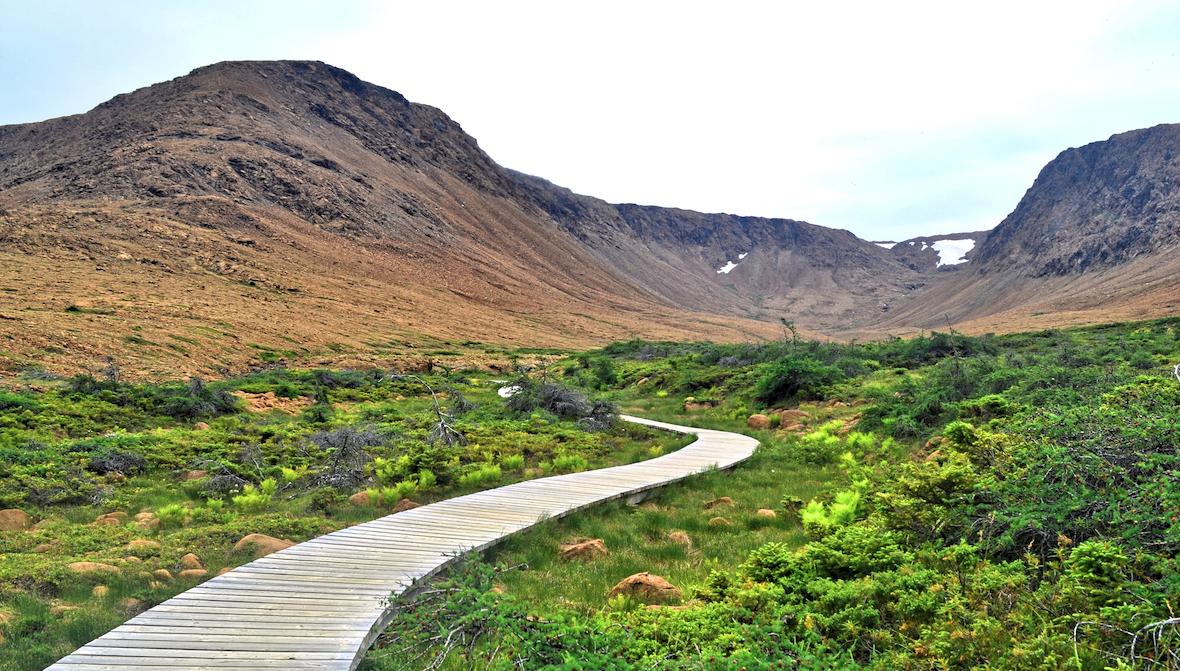
In Newfoundland you’ll find 29,000 kilometres of pristine coastline, dotted with beaches, sea stacks, and close to 300 hiking trails. I’m told that the majority of the hiking is well worth it. The Tablelands geology marks a time when the continents of Africa and North America collided, pushing rocks that were originally beneath the ocean to their present position. It gives a strange out-worldly feeling, like you’ve landed on Mars or something.
5. Thunder Cove Beach, PEI
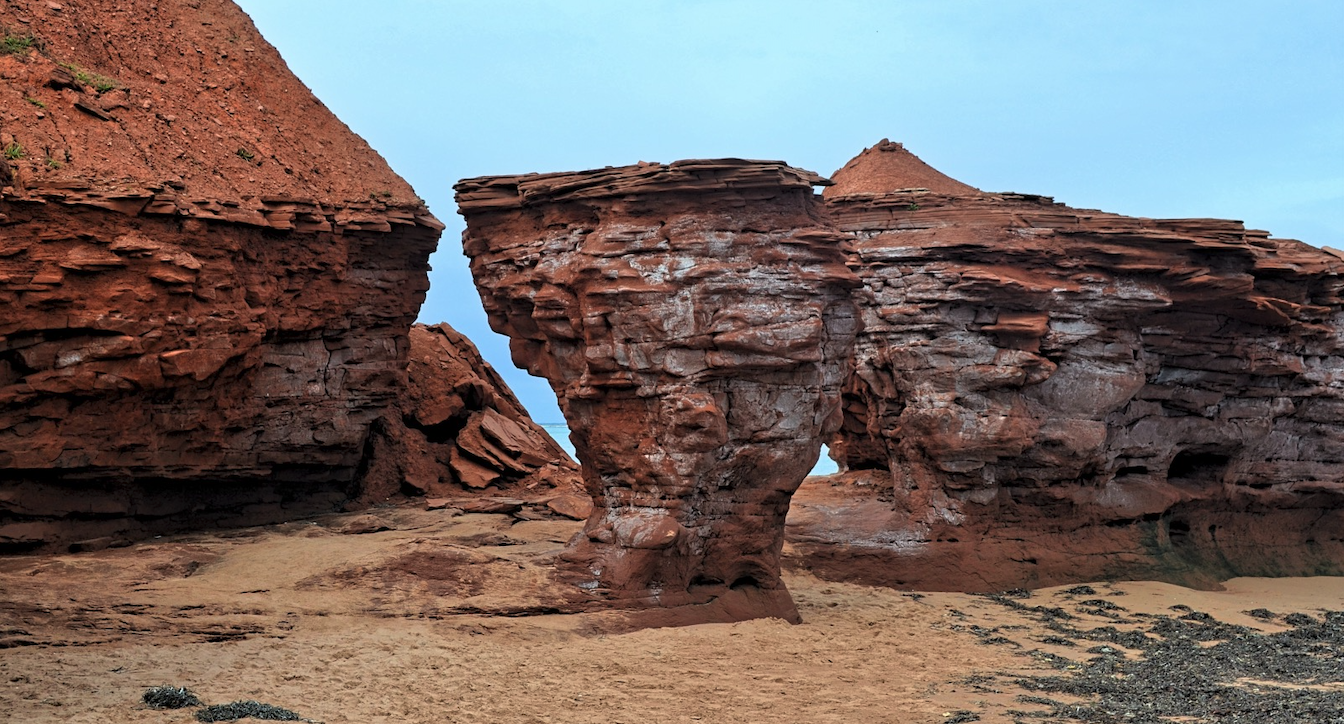
Thunder Cove Beach is one of those local secrets that folks prefer to keep hidden. In Darnley, just outside of Kensington, it’s off the beaten road. Thunder Cove is a far cry from the rest of PEI’s north shore, which is noted for huge rolling dunes and wide beaches of fine sand.
The shore and beach are geologically diverse and serve as a live demonstration of how water and wind shape and change the terrain on the Island.
The red colour derives from the presence of iron in the worn red sandstone on the beach. As a result, the intensity of the red is proportional to the amount of iron present. Thunder Cove Beach is a hidden gem on Prince Edward Island if you want to see red sand.The cliffs, columns, and cave formations made of sandstone are never the same twice, and they are fully at the mercy of nature! You can picture yourself standing in the Arizona desert if you look in the correct direction.
6. Cheltenham Badlands, Ontario
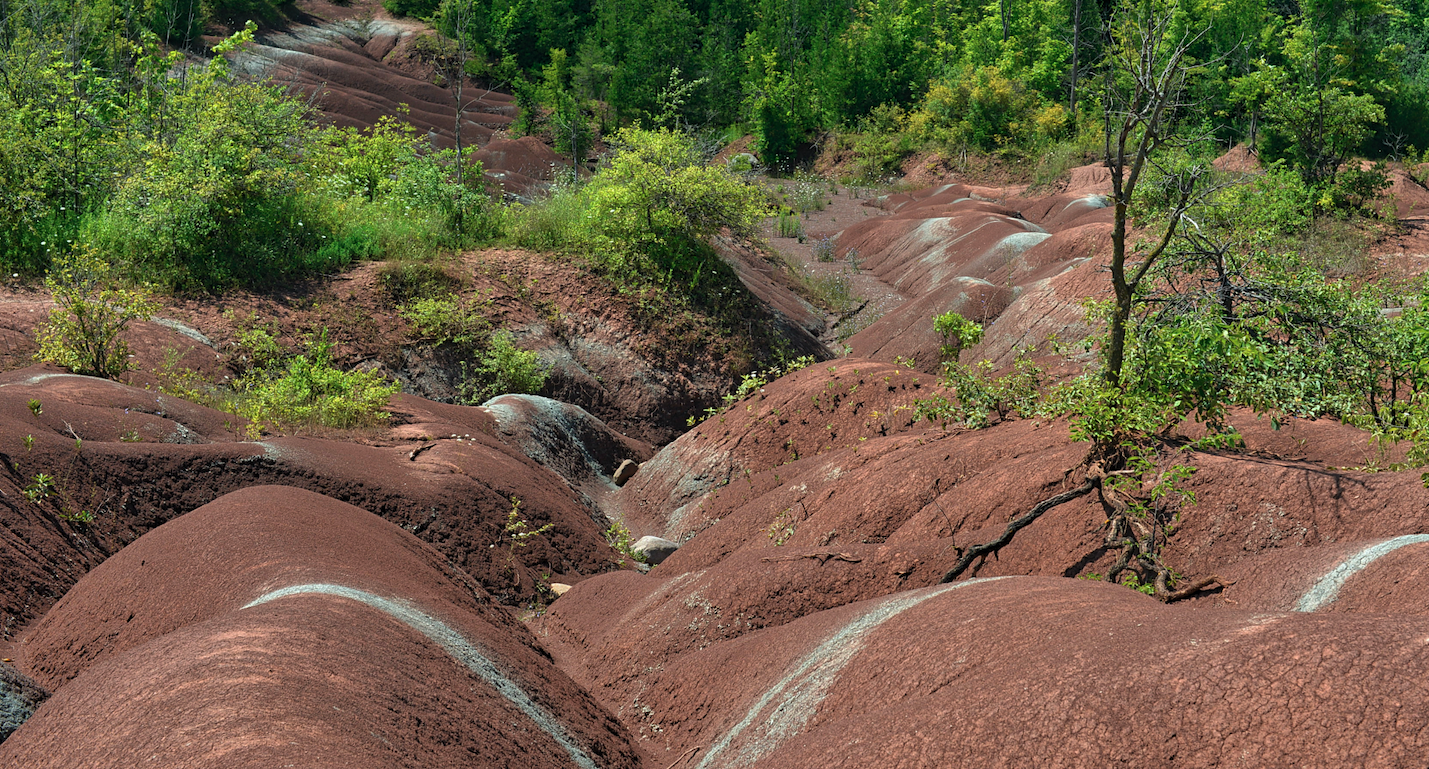
The southeast side of Olde Base Line Road, between Creditview and Chinguacousy Roads, is where you’ll find the Cheltenham Badlands in Caledon, Ontario. The exposed and severely degraded Queenston shale is present in this roughly 0.4 square km region. Because of the easily apparent geologic processes, the distinctive topography of the exposed shale, and its striking red colour, the Cheltenham Badlands are a popular tourist destination and an important educational site. The location is recognized as one of Ontario’s outstanding examples of “badlands topography” and is therefore designated as a Provincial Earth Sciences Area of Natural and Scientific Interest (ANSI).
During the Middle and Late Ordovician eras, some 450 million years ago, the Queenston Formation was formed, and an exposed portion of it is known as the Badlands. The Taconic Mountains formed during this time as a result of Gondwana colliding with Laurentia.
. . .


